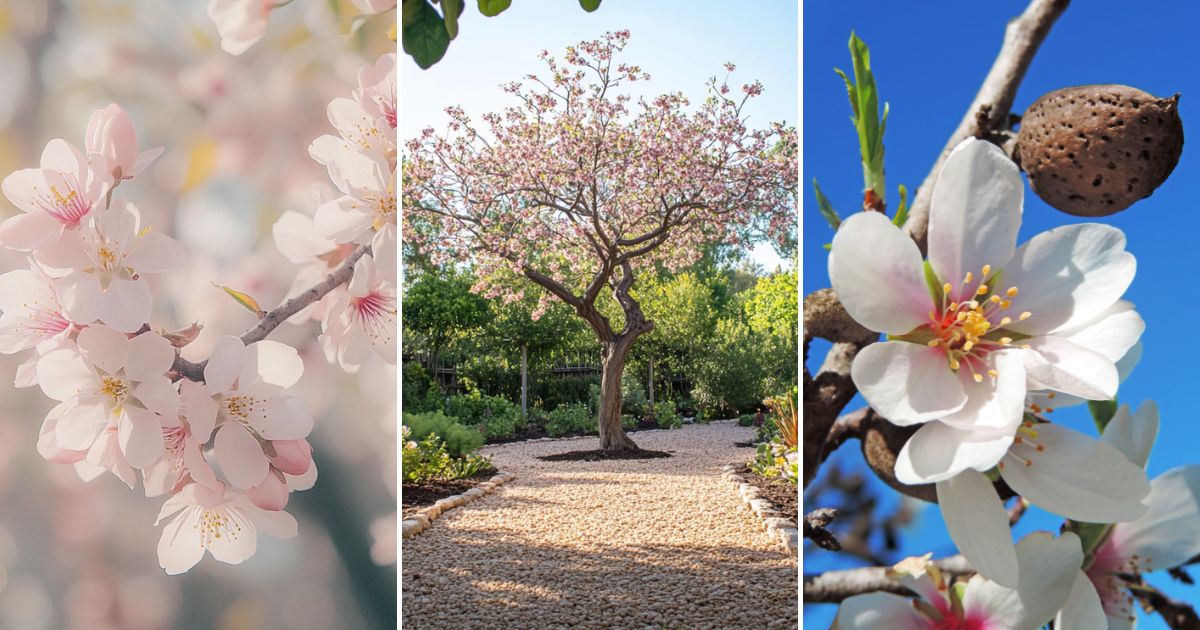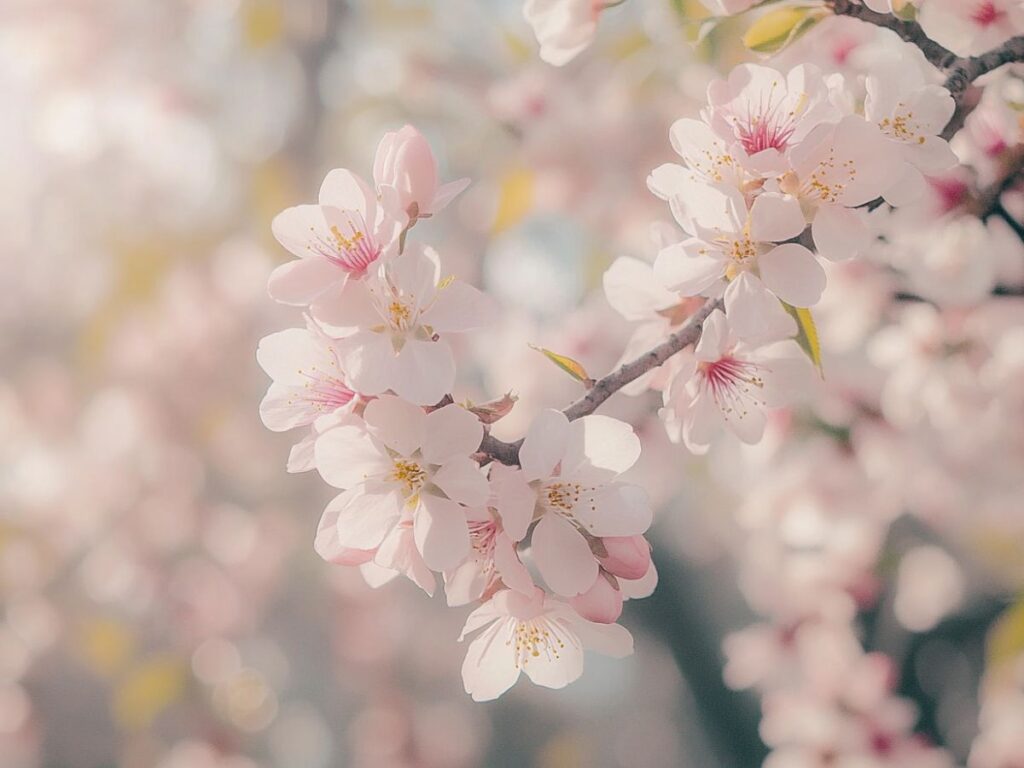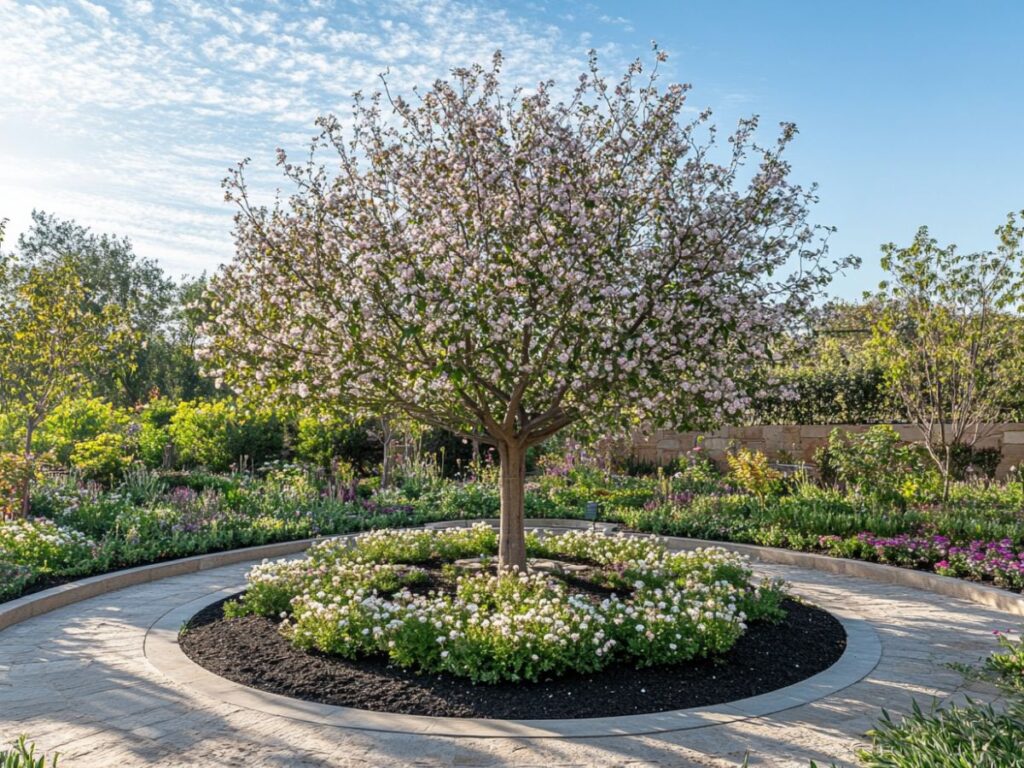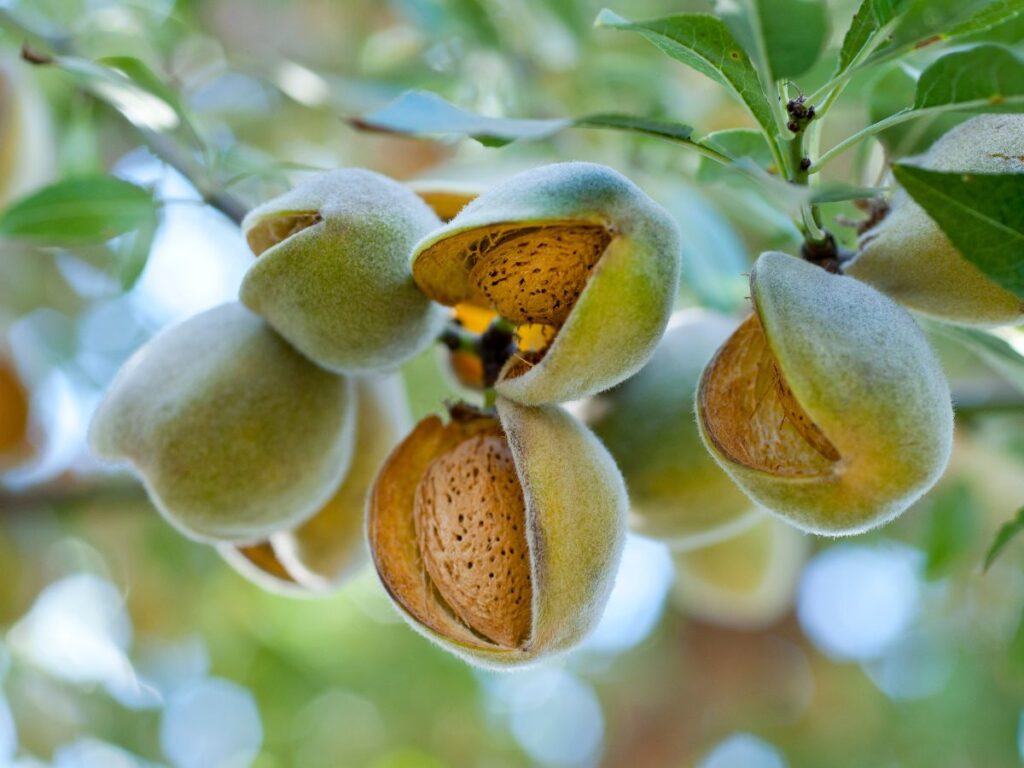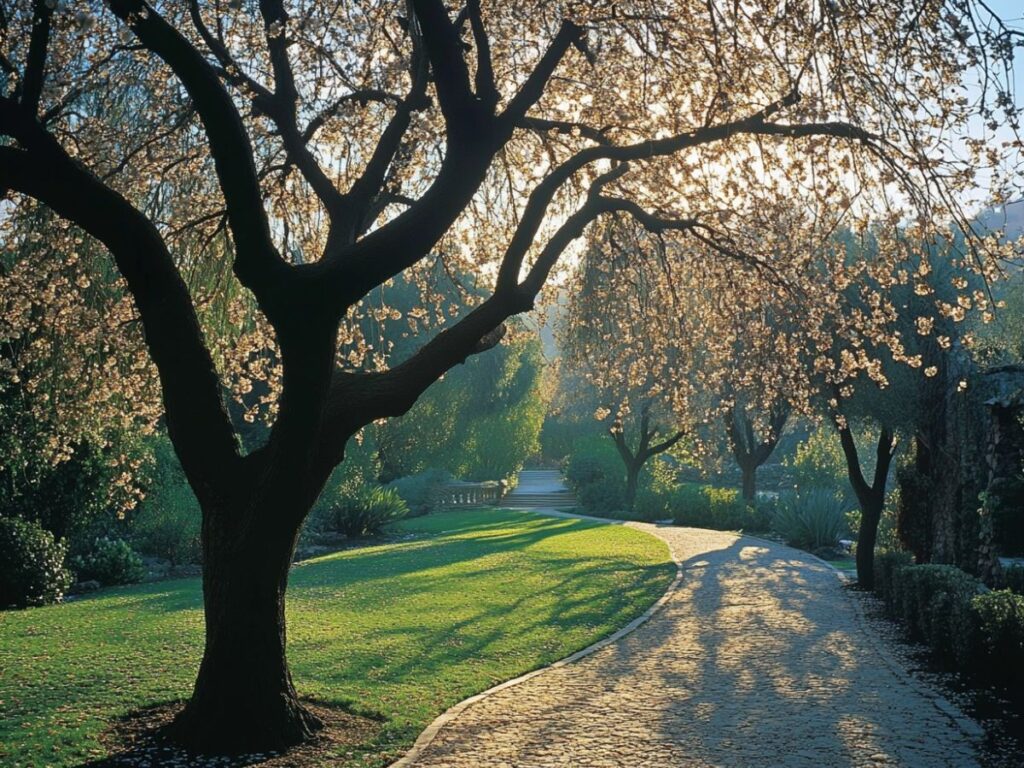There’s something undeniably charming about adding a tree to your garden, especially when that tree offers more than just shade.
Almond trees, with their delicate blossoms, graceful branches, and abundant harvests, are a perfect way to bring both beauty and functionality to your outdoor space.
Beyond their aesthetic appeal, almond trees provide multiple benefits that make them an ideal addition to any landscape.
Here are five compelling reasons why planting almond trees will not only beautify your garden but also enrich it in many ways.
1. The Stunning Spring Blossoms
One of the most enchanting features of almond trees is their gorgeous spring blossoms. These delicate flowers are among the first to bloom, signaling the arrival of warmer weather.
The blossoms appear in soft pinks and whites, covering the tree in a cloud-like display that’s nothing short of breathtaking.
What’s even more special is that almond trees often bloom earlier than other flowering plants, making them a standout in the garden.
While much of the landscape is still waking up from winter’s slumber, your almond tree will be bursting with color, creating a beautiful contrast against the backdrop of your garden.
The flowers not only add beauty but also attract pollinators like bees, which play a crucial role in the health of your garden’s ecosystem.
The almond tree’s blossoms also have a lovely fragrance that can fill the air around your garden, adding another layer of sensory beauty.
Picture yourself stepping outside on a cool spring morning, taking in the soft, floral scent of your almond tree’s blooms—it’s a delightful experience that adds a touch of luxury to your outdoor space.
2. Year-Round Visual Interest
Almond trees aren’t just beautiful in the spring; they offer year-round visual interest that can enhance your garden in every season.
In the spring, of course, you’ll get those stunning blossoms, but even when the flowers have fallen, the almond tree continues to offer beauty and structure to your landscape.
During the summer, the almond tree’s glossy, green leaves provide a lush canopy that offers both shade and texture.
The tree’s branches create a graceful silhouette that can serve as a focal point in your garden or blend seamlessly with other plants and trees.
Almond trees have an open, airy structure that allows dappled sunlight to filter through, creating a serene and inviting atmosphere beneath their branches.
As summer turns to fall, the almond tree’s leaves begin to change color, offering a subtle yet lovely display of autumn hues.
While almond trees don’t produce the dramatic reds and oranges of some other trees, their soft golden leaves can add a gentle warmth to your garden’s fall palette.
Even in the winter, when the tree sheds its leaves, the almond tree remains a beautiful part of the landscape. The bare branches have an elegant, sculptural quality that adds interest to the garden’s winter scenery.
Whether dusted with snow or silhouetted against the sky, the almond tree’s form is both striking and serene, making it a lovely addition to your yard all year long.
3. The Joy of Harvesting Your Own Almonds
There’s something deeply satisfying about growing your own food, and with an almond tree in your garden, you can enjoy the added bonus of a bountiful almond harvest.
Almonds are not only delicious and nutritious, but they’re also versatile, making them a fantastic crop to grow at home.
Almond trees typically begin producing nuts after three to five years of growth, and once they start, you’ll have the pleasure of harvesting your own homegrown almonds each year.
In late summer to early fall, you’ll notice the almond fruit—the hull—beginning to split open, revealing the hard-shelled almond inside. This is your cue that the almonds are ready to harvest.
The process of harvesting almonds is simple and fun: gently shake or knock the branches to release the nuts, and watch as they fall to the ground.
After collecting them, you’ll need to remove the outer hull and let the almonds dry in their shells for a week or two before cracking them open.
There’s nothing quite like cracking open a fresh almond and enjoying its slightly sweet, rich flavor, knowing that it came from your own backyard.
4. A Low-Maintenance, Drought-Tolerant Addition
For many gardeners, adding beauty to the garden often comes with the responsibility of additional care and maintenance.
Fortunately, almond trees are relatively low-maintenance once established, making them an ideal choice for those who want to enjoy a stunning tree without the hassle of constant upkeep.
Almond trees thrive in well-drained soil and prefer a sunny location, but they don’t require much beyond these basic conditions.
Once planted, your almond tree will need regular watering as it establishes itself, but after the first few years, it becomes quite drought-tolerant.
This makes it a fantastic option for gardeners in regions with hot, dry summers or those looking to conserve water while still maintaining a beautiful garden.
While it’s important to prune your almond tree each winter to remove dead or overcrowded branches, this task is minimal compared to the care required by many other flowering trees.
Pruning helps improve air circulation and encourages healthy growth, but it’s a simple job that can be done with basic gardening tools.
Almond trees are also relatively resistant to pests and diseases, which means you won’t need to worry about constant spraying or treatments.
This makes them an eco-friendly option for gardeners who want to reduce their use of chemicals in the garden while still enjoying a thriving, healthy tree.
5. A Unique and Meaningful Focal Point
There’s something special about growing a tree that carries both beauty and meaning, and almond trees are rich in both. In many cultures, almond trees are seen as symbols of hope, renewal, and beauty.
Their early spring blossoms are often associated with new beginnings, making them a perfect tree to add to a garden designed to inspire peace and reflection.
The almond tree’s presence in your garden can also serve as a meaningful focal point.
Whether you plant a single tree in a central location or group several trees together, their graceful form and seasonal beauty will draw attention and admiration from visitors.
The combination of their delicate blossoms, glossy leaves, and productive nature makes almond trees a unique addition to any garden, standing out from more common ornamental trees and shrubs.
For families, growing an almond tree can become a meaningful tradition. Watching the tree grow from a small sapling into a full-grown tree over the years creates a sense of connection and continuity.
It’s a tree that not only enhances the physical beauty of your garden but also adds emotional and symbolic depth, making it a tree you’ll cherish for years to come.
If you’re looking for a tree that combines beauty, practicality, and a touch of magic, the almond tree is an ideal choice. From the stunning spring blossoms to the joy of harvesting your own almonds, these trees offer so much to any garden they inhabit.
